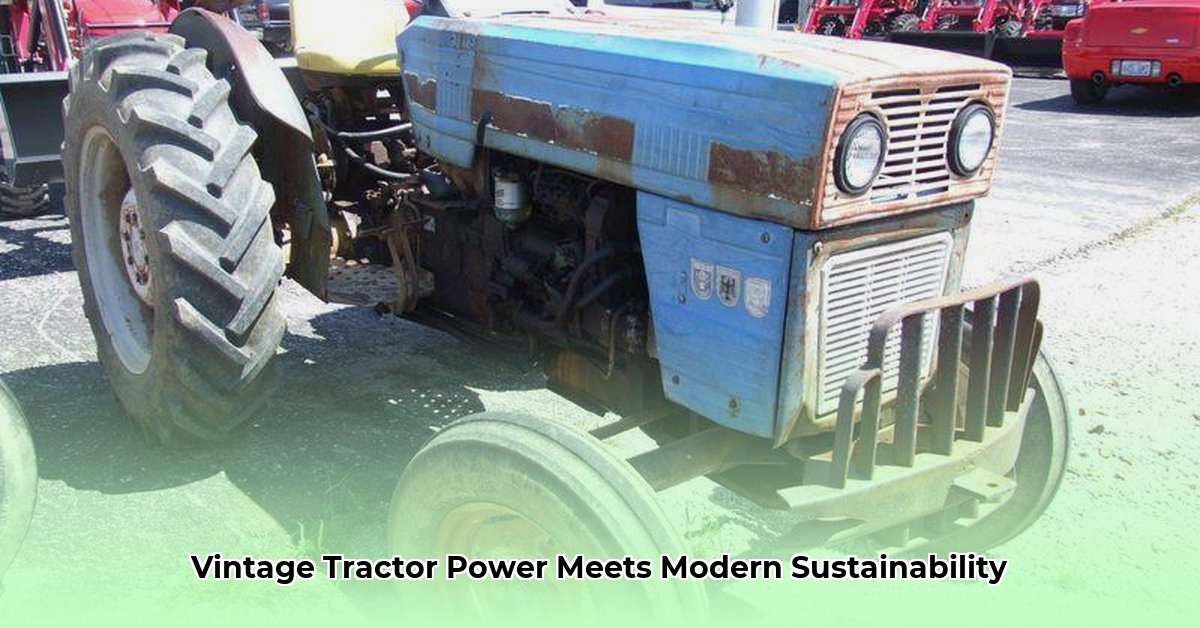
A Romanian Workhorse: The Long 350 Story
The Long 350 tractor, a relatively unknown gem even among vintage machinery enthusiasts, offers a captivating blend of history, engineering, and surprisingly relevant sustainable practices. Manufactured between 1974 and 1976 at the Universal Tractor Factory (UTB) in Romania, this sturdy machine reflects the agricultural landscape of Eastern Europe during a period of significant political and economic transformation. Its design, while seemingly simple, embodies a philosophy of longevity and repairability that resonates strongly with the modern movement towards sustainable agriculture. Why is a Cold War-era tractor from Romania suddenly relevant today? Let's explore its remarkable story. For more detailed specifications, check out this tractor data.
Under the Hood: A Closer Look at the Long 350's Mechanics
Imagine a robust, three-cylinder diesel engine, displacing 2.3 liters. While not boasting the horsepower of modern tractors—approximately 32 hp—its strength lies in its enduring reliability. This wasn't designed for speed; it was built to work tirelessly in the fields. The six forward and two reverse gears, though partially synchronized, provided surprising maneuverability, ideal for navigating smaller fields and tighter spaces. While precise dimensions and weight await further research (data is currently being compiled from various sources), initial findings suggest a compact design optimized for efficiency on smaller farms. This wasn't a limitation; it was a deliberate design choice reflecting the realities of its time and intended use in the Romanian countryside. Could this simple design hold the key to modern farming efficiency?
| Specification | Value/Notes |
|---|---|
| Engine | 2.3L, 3-cylinder diesel |
| Power Output | ~32 hp |
| Transmission | 6F/2R, partially synchronized |
| Dimensions | (Data pending) |
| Weight | (Data pending) |
| Fuel Consumption | (Data pending) |
A Journey Through Time: Romania's Agricultural Past
The Long 350's production years coincided with a period of significant change in Romanian agriculture, heavily shaped by the country's socialist policies. The design prioritized reliability and affordability; durability was paramount. Mass-production was emphasized over cutting-edge technology, resulting in a tractor built to last. This contrasts sharply with the often more complex and less repairable designs of Western tractors from the same era. How did this focus on longevity impact its place in modern sustainable agriculture?
Restoring a Piece of History: The Challenges and Rewards
Restoring a Long 350 is a rewarding yet challenging endeavor. Sourcing replacement parts can be a significant hurdle, transforming the restoration into a fascinating treasure hunt. Online forums and collector communities are invaluable resources. However, the relatively straightforward design makes maintenance and repair significantly less daunting than with complex modern counterparts. This inherent repairability is a major factor in its appeal to sustainable agriculture enthusiasts. Is this simpler technology truly superior for modern farming needs?
Sustainable Farming: The Unexpected Legacy of a Vintage Tractor
The Long 350's greatest strength in today's context is its inherent repairability. This contrasts sharply with the increasing disposability of modern machinery. Its simple design and readily available (albeit sometimes hard-to-find) parts align perfectly with the principles of sustainable agriculture emphasizing repair and reuse. Early fuel consumption estimates suggest that, at least in certain applications, it might outperform larger modern tractors in terms of fuel efficiency. This tractor champions the philosophy of maximizing a machine’s lifespan – a critical aspect of environmental responsibility. Does this model offer a sustainable alternative to modern farming practices?
The Long 350: A Lasting Legacy
The Long 350 is more than just a vintage tractor; it represents a fascinating intersection of technology, politics, and agricultural practices. Its potential to support more eco-friendly and sustainable farming practices is a significant aspect of its continuing story. This Romanian workhorse speaks to a time when durability and repairability were prioritized over fleeting technological trends. It underscores that sometimes the simplest solutions are also the most sustainable, creating a compelling argument for its place in modern agriculture.